The views expressed in our content reflect individual perspectives and do not represent the authoritative views of the Baha'i Faith.
This essay continues Chris Buck’s interview with Lakota world citizen educator Kevin Locke, who explains why the Baha’i concept of progressive revelation applies equally to indigenous religious traditions.
[Chris] In the news today, Kevin, I read a BBC story: “Sprawling Mayan network discovered under Guatemala jungle” (February 2, 2018), in which it is now thought that millions more indigenous peoples had lived and flourished in pre-conquest Guatemala than previously estimated.
The Lakota were, and are, among “the cities of all nations” to whom God “hath sent His Messengers,” as Baha’u’llah wrote. Baha’is understand that the Creator sends every civilization a prophet, a guide to goodness and spiritual growth.
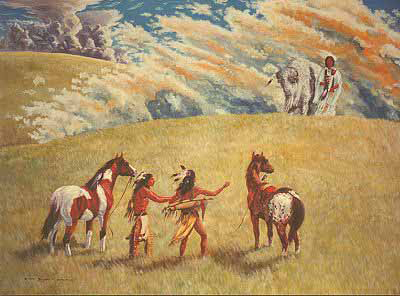
The White Buffalo Calf Woman
Since Lakota sacred tradition identifies White Buffalo Calf Woman as first and foremost among these messengers of God sent to the Lakota people, then we can fairly deduce that White Buffalo Calf Woman was a prophet of God. Who else could she be? So, let me ask you this: Would a wider recognition of White Buffalo Calf Woman as a messenger of God be an important, even necessary, part of the Baha’i and Lakota spirit and social dynamic?
[Kevin] Yes. Baha’u’llah explains what these messengers were empowered to do. So, in this sense, White Buffalo Calf Woman was “commissioned to announce unto men tidings of the Paradise of His good pleasure, and to draw them nigh unto the Haven of abiding security, the Seat of eternal holiness and transcendent glory,” as Baha’u’llah wrote in his tablet about progressive revelation and the relatedness of all the messengers of God. This is what White Buffalo Calf Woman was sent to do. This is what she did.
If the Lakota people are to be seen as equals, as they should be, then reciprocal respect for their spiritual traditions is very important. There is no harm in doing so. Great good can come of this mutual respect and recognition, if everyone recognizes and respects these Lakota sacred traditions.
[Chris] Is respect for Lakota sacred traditions by Baha’is and everyone else consistent with these passages from the Baha’i writings?
… consort with the followers of all religions in a spirit of friendliness and fellowship, to proclaim that which the Speaker on Sinai hath set forth and to observe fairness in all matters. They that are endued with sincerity and faithfulness should associate with all the peoples and kindreds of the earth with joy and radiance, inasmuch as consorting with people hath promoted and will continue to promote unity and concord, which in turn are conducive to the maintenance of order in the world and to the regeneration of nations. Blessed are such as hold fast to the cord of kindliness and tender mercy and are free from animosity and hatred. – Baha’u’llah, Tablets of Baha’u’llah, pp. 35-36.
It is permitted that the peoples and kindreds of the world associate with one another with joy and radiance. O people! Consort with the followers of all religions in a spirit of friendliness and fellowship. Thus hath the day-star of His sanction and authority shone forth above the horizon of the decree of God, the Lord of the worlds. – Ibid., p. 22.
[Kevin] Absolutely. It’s good that you’ve pointed this out. All the more reason for Baha’is, and all people for that matter, to recognize White Buffalo Calf Woman as a messenger of God—just as it’s important for the Lakota people to learn about Baha’u’llah! If both Baha’u’llah and White Buffalo Calf Woman were here today, they would respect one another, wouldn’t they? If so, why can’t we do likewise?
[Chris] If so, is recognition of the best of Lakota spirituality a good way to promote the unity of religions?
[Kevin] Yes, of course. Let me quote Jacqueline Left Hand Bull, who my late mother, Patricia Locke, interviewed in 1989:
Patricia Locke: How do you as a Lakota woman reconcile your culture and the Baha’i Faith?
Left Hand Bull: First of all our name, “Lakota,” means “peace, amity, harmony, balance.” We perceive the universe as being interrelated and interconnected. That’s our most significant prayer: “Mitakuye oyasin” (“All my relations”). We understand this relatedness in fours: the four directions, the four winds, the four elements of life (fire, water, air and earth), the four colors (red, black/blue, white and yellow), that are symbolic of the four races of humankind. This worldview is sacred and is based on the teachings of the White Buffalo Calf Woman.
This Lakota worldview meshes with the Baha’i world view. The same Creator that sent Moses and Jesus also sent the White Buffalo Calf Woman and Baha’u’llah, the prophet founder of the Baha’i Faith. So it’s not difficult for me to reconcile the teachings of the White Buffalo Calf Woman and Baha’u’llah. I see it—Baha’u’llah’s teachings—as the next step of Lakota ways. Only now we take our place in the world community, with all Indian people united.
From my mother’s perspective, and from mine, that’s exactly what Baha’u’llah meant when he taught the unity of all Faiths:
O ye that dwell on earth! The religion of God is for love and unity; make it not the cause of enmity or dissension. In the eyes of men of insight and the beholders of the Most Sublime Vision, whatsoever are the effective means for safeguarding and promoting the happiness and welfare of the children of men have already been revealed by the Pen of Glory. – Baha’u’llah, Tablets of Baha’u’llah, p. 220.


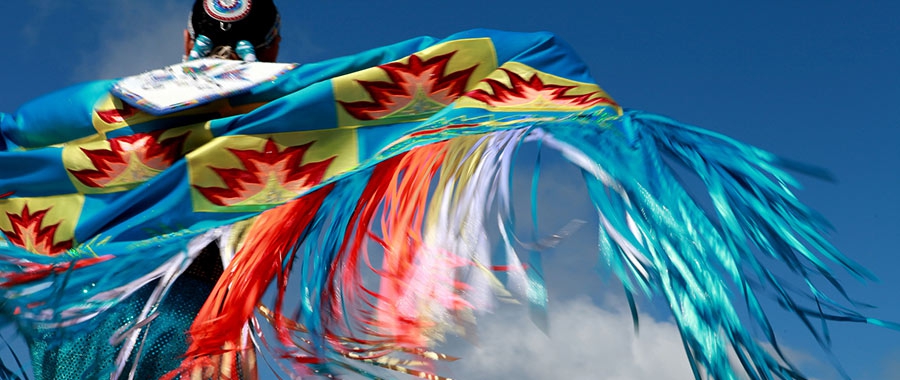
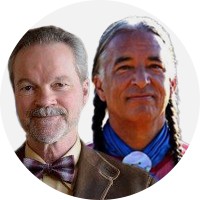
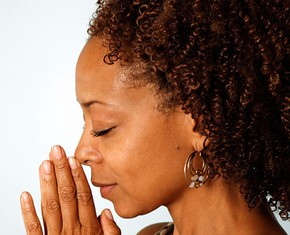
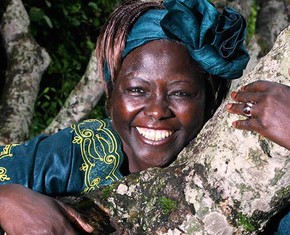










Comments
Sign in or create an account
Continue with Googleor